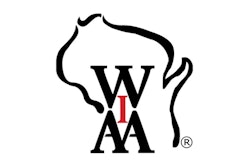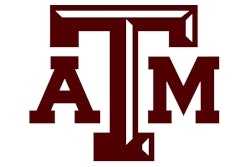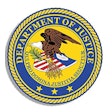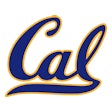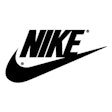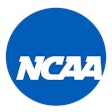
In a previous post, I wrote about 10 elements every request for qualifications should include and offered suggestions to help your RFQ stand out and become a priority project for architecture firms.
Once you receive responses to your RFQs, it's time to narrow the field by selecting the three to five firms that most appeal to your team. That determination should be made by (at a minimum) considering the following regarding each firm:
- Design experience with similar facilities
- Qualifications of proposed staff
- Makeup of the consulting team
- History of past performance
- Financial and legal status
- References
Narrow down a couple interview dates before notifying the firms on your shortlist that they are finalists. This way, any scheduling conflicts can be sorted out ahead of formalizing the invitations. Also, determine ahead of time the topics to be covered in interviews. Interviewees always appreciate knowing your interests as a framework for putting together their presentation.
Relationships count
Interviews are the most important step in the RFQ process. In some cases, you might already be familiar with some of the people on a design firm’s team because of previous projects. In other cases, an interview could be the first time you meet. Regardless of the background of the participants, an interview represents an opportunity to determine how comfortable you are with each other. In this environment, you will be able to observe and evaluate — envisioning whether you can work with each other for approximately the next three years. As trite as it may sound, when all other things are basically equal, the final decision often comes down to relationships.
From AB: How to Select the Right Architect for Your Project
The interview process can be likened to courtship at the beginning of a relationship. I remember interviewing for a project in California in which the project manager sent my firm, Brinkley Sargent Wiginton Architects, a detailed letter explaining what the interview should cover. Upon arrival, we were greeted by personalized welcome signs and staff that kept the interviewed firms separated (always an awkward moment) between well-orchestrated appointment times. The project manager also followed up with a polite thank-you note. We didn’t win that one, but I would certainly respond to an RFQ from that entity again, because of the professionalism of the client. They were folks you want to work for.
Five interviewing tips
Here are five suggestions to keep in mind when scheduling and conducting interviews with design firms:
1. Limit the number of interview participants. To start, avoid the urge to invite that 5th or 6th team “just to hear what they have to say.” If you are on the fence about them from the start, they are probably not a good fit for you, and you are most likely wasting effort on both sides toward a predictable outcome. Individually, choose at most six individuals from your side familiar with the project and who will be intricately involved throughout the process. Determine who you want to hear from on the design team and limit their cast to key personnel. One of the goals of the interview is for your team and the design team to gauge personalities and determine compatibility. The more people involved, the more difficult that becomes.
2. Provide design teams a minimum of five working days to prep for the interview. It is not unusual for a design firm to receive a call or letter announcing its selection as a finalist for a specific project and then confirming a specific and fast-approaching date and time for the interview. This good-news-but-short-notice scenario is always a challenge. Are key personnel available at that time? What about key consultants or specialists, especially if travel is involved? Beyond these logistical obstacles, there is significant time and effort required to put together an interview presentation. We always prefer to craft a presentation to a specific project, rather than risk the interview appearing as a template performance. The client team should expect no less. While a minimum of five days for prep time is a must, even better would be to allow up to ten working days before the interview, giving teams enough time to put their best foot forward.
3. Create a comfortable environment. Two conference rooms with large tables is the most expedient way — allowing one firm to set up and take down while another firm is interviewed. If this is not feasible, or you want to keep your team in one place, allow time for setup and take down between meetings to avoid the awkward overlap. Make sure the rooms are equipped with proper audio-visual technology, internet access, and cords and cables.
4. Develop a scoring and ranking system. I don’t recommend one particular process over another. You can use numbers or letters to grade prospective firms in a variety of categories critical to the project’s advancement and then give an overall ranking, or you can use checkboxes or another type of system — whatever approach works best for your team. It’s also a good idea to build in time after each interview to digest what your team has seen and heard and then allow individuals to organize their thoughts via a form with room for rankings and comments. Many project teams allow up to 30 minutes between interviews for this process, and then allocate 10 to 15 minutes for a break and prepping the room for the next interview. After all interviews are complete, revisit the scoring together as a group. The last interviewee is naturally compared to the prior interviews, but the same cannot be said for the first interviewee. The fairest process is one that closes by treating each team equally with respect to their peers.
5. Determine how long each interview needs to be. Tailor the designated interview length to the scope of the project. Smaller projects don’t warrant the same depth of presentation and discussion as do major or complex projects. Typically, interviews last 45 minutes or one hour: About 20 or 30 minutes for the design firm’s presentation, and about 20 minutes for questions and answers. If you think the project warrants more time, schedule more for either the presentation or the Q&A session (or both). It always surprises me when we get shortlisted for a major or complex project and only receive 20 minutes to present ourselves. That time goes by remarkably fast. This hurry-up approach doesn’t seem like the best way to make a multimillion-dollar, long-term decision.
The interviewing phase is also your opportunity to market yourself as a client, so don’t forget to focus on what makes you a desirable client and why the design firm would want to work on your project — or perhaps to try again for your next one, if they aren’t so lucky this time.















